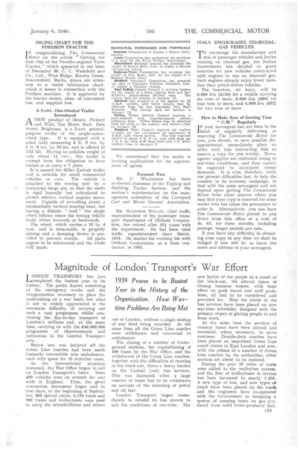Mechanization Aids
Page 25

If you've noticed an error in this article please click here to report it so we can fix it.
Farm Organization
NQMINALLY concerned' with the business organization of the farm, the fourth annual farming conference was held at Oxford this week. Actually, most speakers kept returning to the subject of power equipment and its utilizatibn to solve, the. problems. of labour and capitalization.
Brig.-Gen. jeans, who farms 2,000 acres in Wilts, remarked on the value of track-laying tractors, which could plough uphill as well as down, on his hilly farms.
Mr. Webster Cory farms 850 acres on the Cotswolds, in units of specialized production. Of 18 men employed, three do work which includes tractor and lorry driving and machine main.tenance. The man mainly responsible for things mechanical makes out returns, showing the allocation of petrol, paraffin, lorry journeys, etc., to the various units of the farm.
In speaking of labour organization in practice, Mr. Edward Lousley, who manages the Lockinge estate in Berks of .some 8,000 acres, said that in 1924 there were employed one tractor, one set of steam-ploughing tackle and 109
horses. To-day, he has no steam tackle, 10 tractors and 77 horses. The average yield of corn and output of cattle is up by almost 90 per cent. He said that practically all haulage was flow done by lorry.
Oil engines were used for elevators, and for pulping roots for the stock, instead of a pony or man power. Tractor hay sweeps and hay hoists were used wherever the hay was stacked in the fields where it was grown and hayloaders were mainly drawn by tractor. As the opportunity occurred, rubbertyred tractor trucks were taking the place of wagons and carts.
Mr, Moses Griffith told of the part played by a Caterpillar Twenty in reclaiming poor hill-land in Wales, under the Calm Hill Improvement scheme. This machine, a hillside model with wide grouser shoes, did over 5,000 hours' work before being overhauled.
A review of mechanical tackle, available to cut costs in drainage work, was given by Messrs, S. J. Wright and J. H.' Blackaby, of the Oxford Institute.












































































